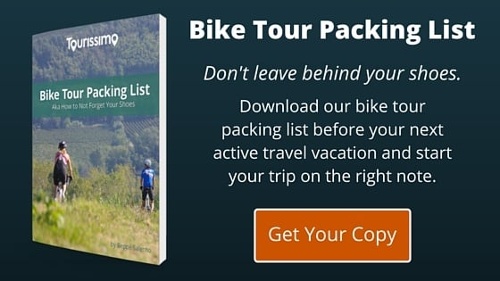We've put a strong emphasis on the food and wine of Friuli and Slovenia in our tour.
The cuisine of Friuli reflects the varied cultures that surround this region and the focus is on simple, homemade products. Pasta, an Italian staple, is eaten in many different forms: lasagna noodles are topped with poppy seeds and gnocchi can be mixed with goulash or smoked ricotta. Polenta is served with meat, game or cheese. A wide variety of soups (an influence from Central Europe) are consumed with different types of dumplings. Friuli is known for its Prosciutto di San Daniele DOP, a cured ham with a sweet, aromatic flavor that is served with bread, melon or figs, and is paired with local white wine. Speaking of wine, the Collio region is a land of big white wines like Pinot, Tocai Friulano, Sauvignon and Collio Bianco. A smaller production of red wines includes Cabernet, Merlot and Collio Rosso.
The Slow Food presidia in Friuli Venezia Giulia are strictly linked to the traditional Friulian lifestyle of farming and cooperation. Among the Slow Food recognized products we have Garlic from Resia, Radìc di mont, Formadi frant, Pan di sorc, Pestàt from Fagagna, Cheese from the rotational dairies.
The pan di sorc (sorc means maize flour in Friulian), is a sweet and spicy bread, rich in transalpine influences. The locally grown cereals, called cinquantini, grow and ripe in a period of 50 days at the most, even then managing to do a complete cycle also in the chill and rainy Gemona area.
The pestàt from Fagagna is a very peculiar seasoning created to preserve the scents and flavors of autumn vegetables and herbs in pork lard. Its production, on a family level, occurs during the slaughter of pigs, from November to March. The lard, coming from local pigs bred in a semi-wild manner with natural feeding, is minced and mixed with chopped vegetables and spices, put into natural casings and matured in damp and cool cellars.
Producing cheese from the rotational dairies was an economical and easy way of managing the milk, suitable for the small-scale dairy production of Friuli's territory, with many farmers in every village. The milk of many families was put together and processed together. The cheese produced, simply called "latteria,” is aged for up to one year.
Just as in Friuli, Slovenia’s cuisine is influenced by the countries that surround it: sausage, Weiner Schnitzel andstrudel from Austria, pasta, gnocchi, pizza and risotto from Italy, and goulash from Hungary. The focus is on home cooked food that is simple and hearty.
The vineyards of the Italian Collio continue into the Slovene Brda, where the rolling hills create several different microclimates. Unlike many of the major wine regions of Europe, Slovenia's winemaking history predates the Romans, and can be traced back to the early Celtic and Illyrian tribes who began cultivating vines for wine production sometime between the 5th and 4th centuries BC. Under Communist rule winemaking traditions were lost, but recently a generation of post-Soviet era vintners are rediscovering them, and since Slovenia’s 2004 entrance into the European Union, their wines are being more widely distributed. Some popular varietals are Refosk [Refosco], Sauvignon Blanc, Ribolla Gialla, Pinot Gris, Malvasia and an indigenous grape called Pinel.

























